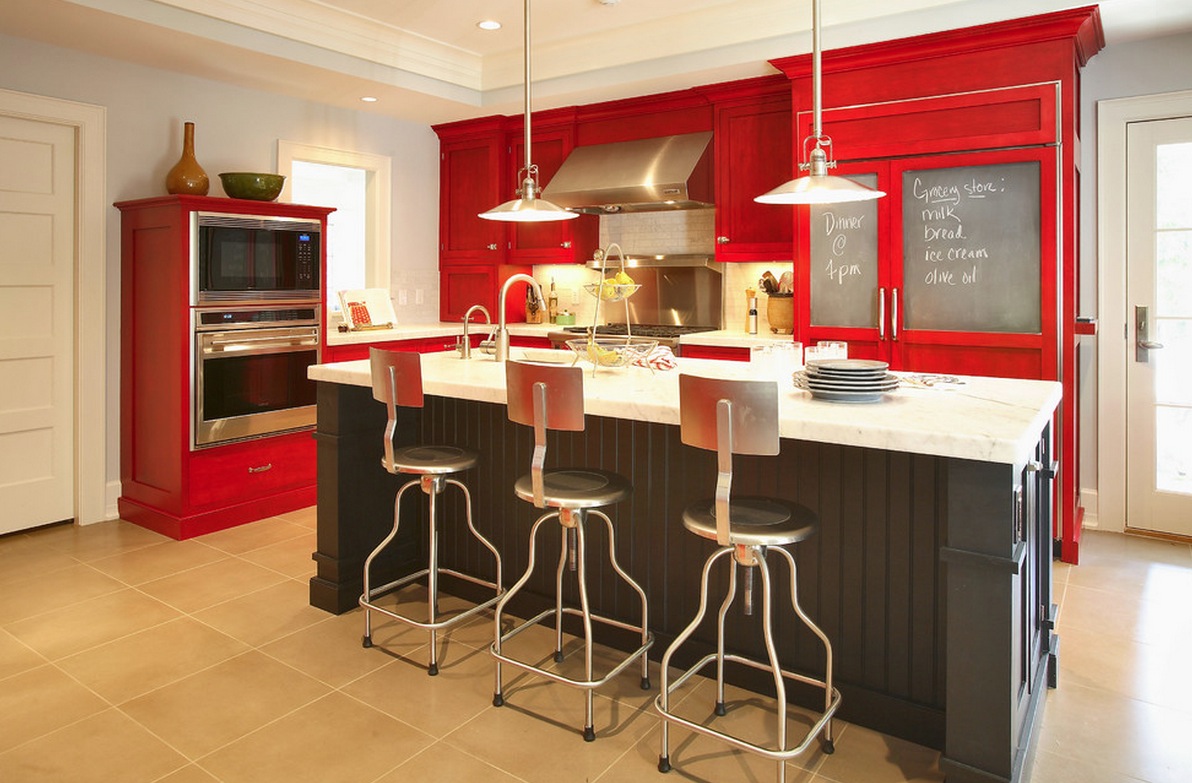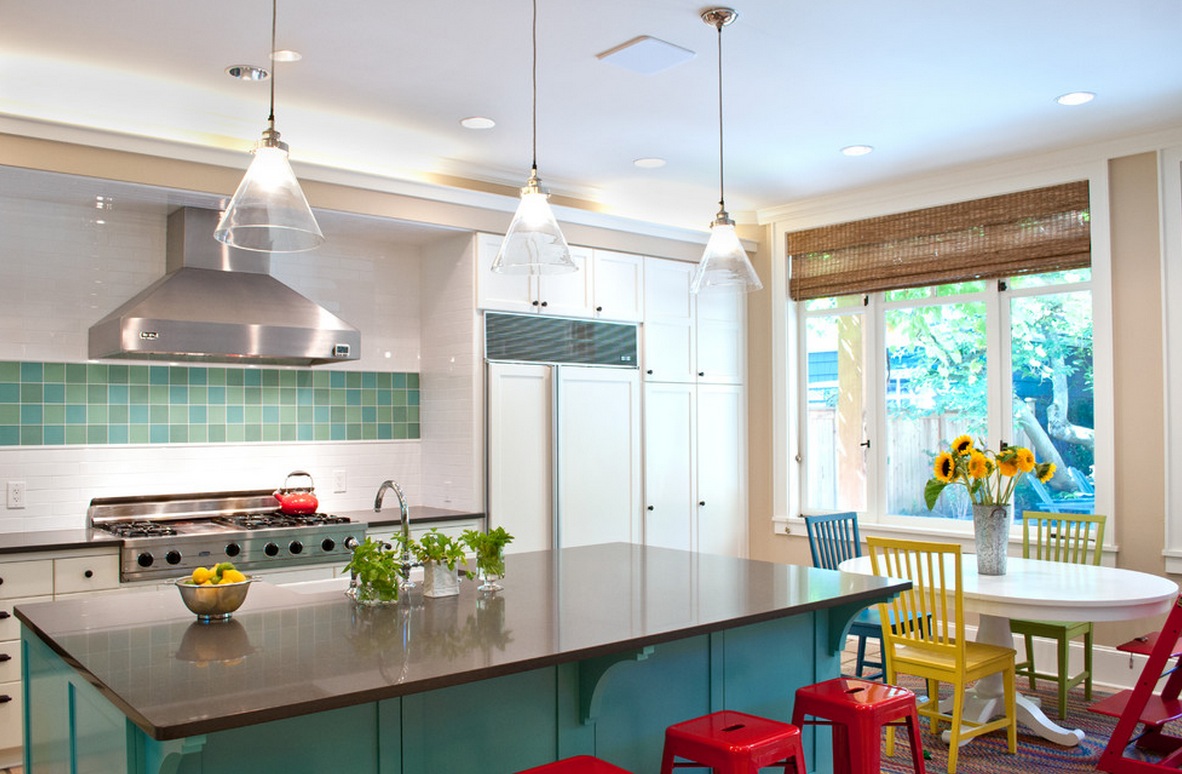10 Things Think Of When Adding Color to your Drab Kitchen
Jul 04, 2014 16:40

You don't realize this, but you actually spend a lot of time in your kitchen; at least to go in and out to prepare meals and grab refreshments. So why not take advantage of the space and turn it into something that inspires you?
Here are 10 things you may not know about adding color to your bland kitchen.
1. Your kitchen color should be an extension of you.
You don't have to be an amazing cook to have a gorgeous kitchen. Kitchens are not only where you prepare food, but also the hub of many cozy conversations. Think of what colors excite you - do you love bright pops of color? Or are you more into a traditional styling of natural wood grains?

2. The colors in your kitchen doesn't have to be permanent.
For many homeowners, choosing colors for the kitchen can be daunting when they think of having to live with the color for years to come. But there are always options to paint, change flooring, countertop and cabinetry colors over the years - and you might have to anyway when it starts to wear and tear.
3. Your kitchen doesn't have to match the rest of your home.
Your kitchen colors don't have to necessarily match the color scheme of your home, depending on your floor plan layout. Of course, there should be some sort of continuity in the main theme of colors in your home. For example, if your home carries hues of muted colors, apply the same theme to your kitchen. You definitely won't want to add a neon '90s theme to your kitchen when the rest of your home is in pastels, right?

4. Colored cabinets can be mixed and matched in your kitchen.
Your entire kitchen doesn't have to be in the same exact color. Today's modern kitchens consist of an eclectic mix of using 1 to 3 different colors. This is most effective with blocks of cabinets, such as an island and then a wall of cabinets can differ in color.
5. Kitchen colors can be enhanced by the right lighting.
No matter what color your kitchen is, finding the right lighting that matches your color scheme is important. It can make your kitchen look brighter, darker, dull, or exciting. You could consider choosing recessed ambient lights, pendant lighting, and under cabinet lighting for countertop luminance as well.

6. Bear in mind that not all neutral color palettes are boring.
There is a common misconception that neutral colors like tans, browns, grays and off-whites in the kitchen are boring. But it's quite the opposite when these colors are matched with rich wood floors, metallic kitchen backsplashes, and eye-catching lighting fixtures. Similarly, all-white kitchens can have the same appeal when paired with rich finishes.

7. You can dramatize natural wood colors too.
Natural wood and wood stains can offer gorgeous color variations in your kitchen and can look timeless. From natural wood flooring, butcher block countertops and a variety of natural wood stains can bring organic color into your kitchen.

8. Kitchen accent tiles subtly add color to the space.
Maybe you don't like your entire kitchen to be colorful. In this case, use subtle accent color in the form of backsplashes, tile surrounds at your wall ovens, or even flooring, to bring some color to create a statement. Consider eye-catching colors in greens, blues, reds, and yellow glass tiles, or metallic tiles for that added eye-catching color pop in your kitchen.
9. Add whimsical colors to your dull kitchen
Bar stools, tiles, textiles, and kitchen counter decor can be great ways to add some color, in fun and whimsical ways.

10. Don’t be afraid to think outside the box
Instead of copying designs you may not totally relate to, think outside the box and go with something you'll truly enjoy and make use of. For example, if you have kids who love to write on walls, add a chalkboard to your kitchen interior. Bring the fun into the kitchen!







































































